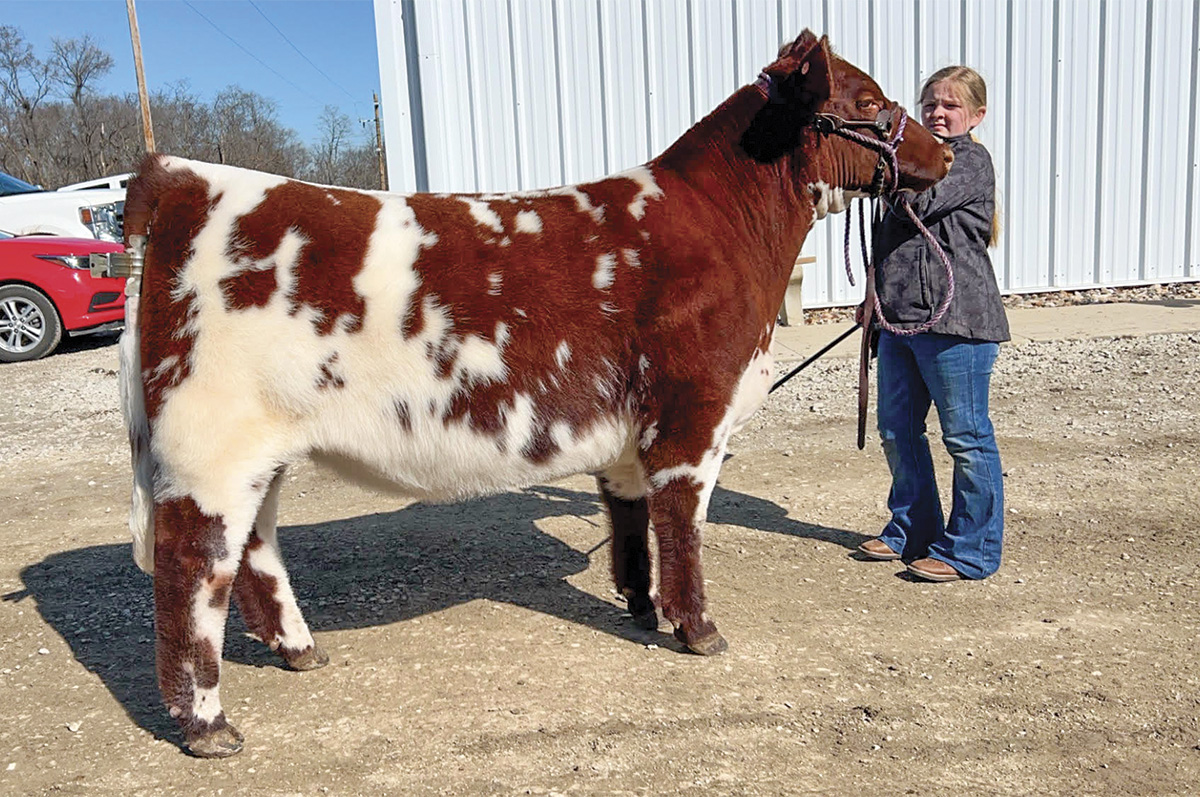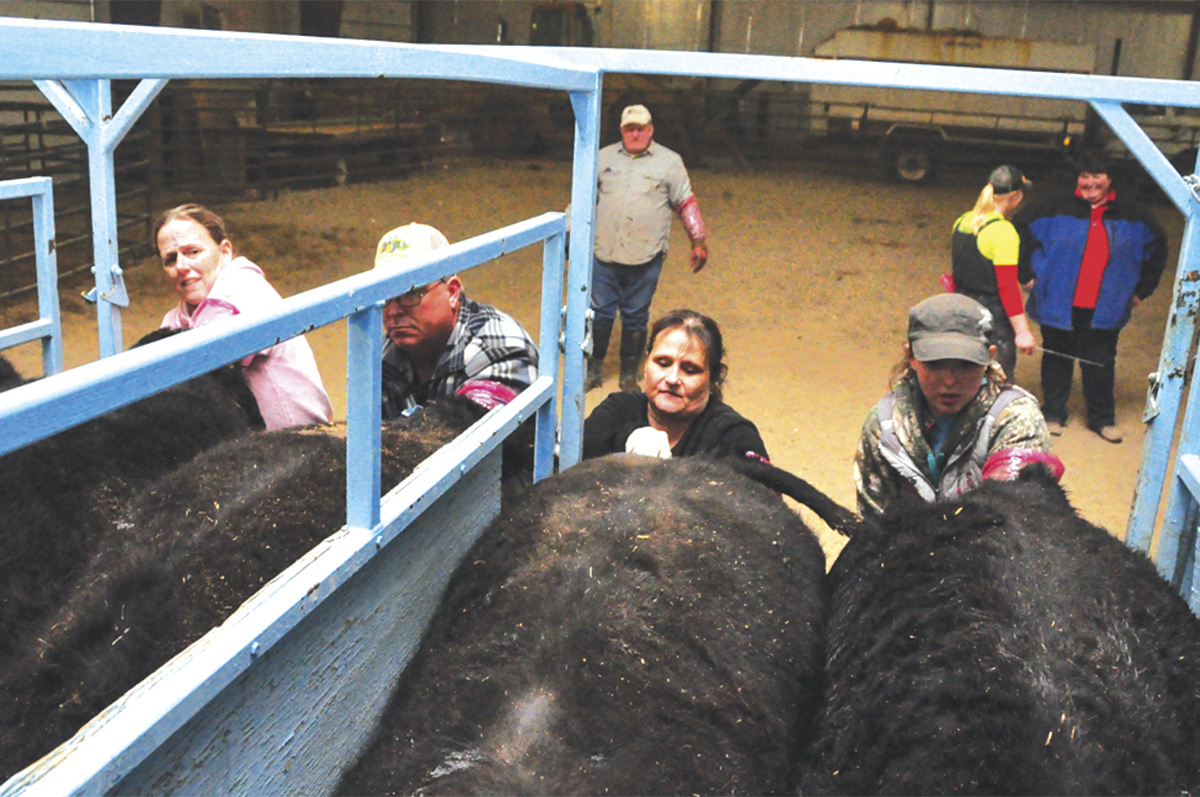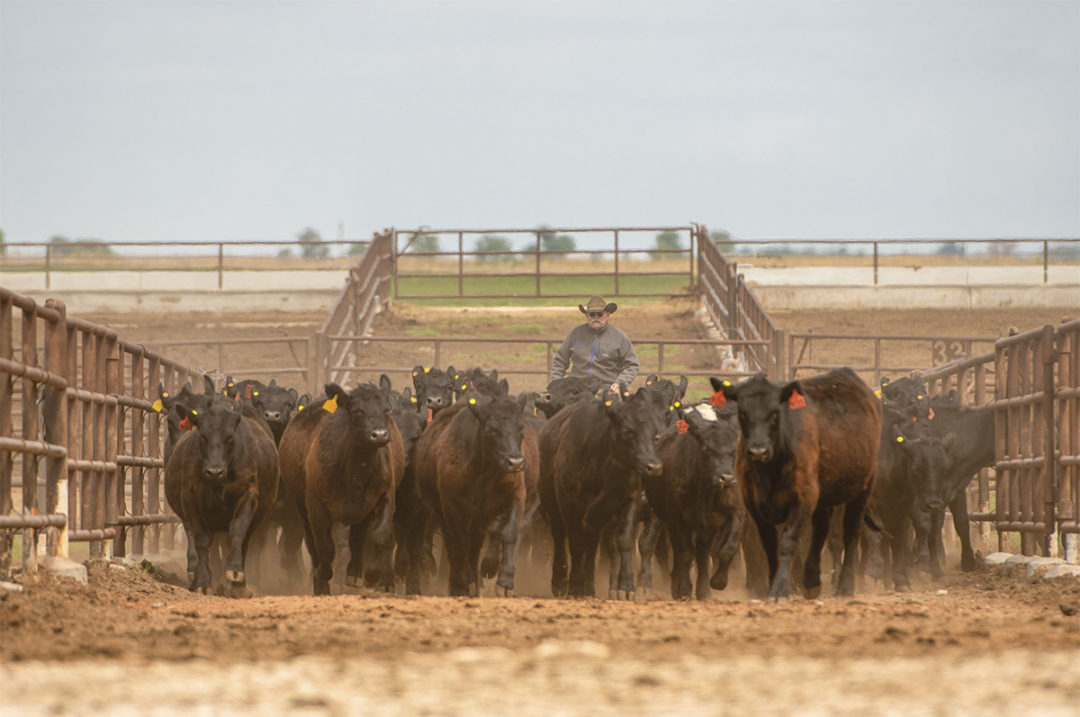Many beef producers use a bull to make sure calves are hitting the ground. However, artificial insemination (A.I.) is a viable option for farmers and ranchers across the country – and for many producers who aren’t sure how the technology can be implemented on their operations. When considering taking the plunge into the world of breeding beef cows artificially, it’s essential to weigh the costs and benefits of the practice.
Mat Vaughn learned to breed cows artificially when he was 12 years old. He took the class with his father and grandfather – partially because he needed a chaperone. Now Vaughn has roughly 40 of his own cows in Maxwell, Iowa, and regularly uses A.I. to get them bred. “It’s a great tool,” says Vaughn.
Vaughn emphasizes that the market for the animals decides whether it is economically feasible to use A.I. “We’re selling show heifers,” says Vaughn. He estimates that he might spend around $100 to get a cow bred. With show heifers currently high in price, A.I. is well worth it to Vaughn.
“A.I. is kind of a niche market,” says Vaughn. And because it allows a breeder to use the absolute best bulls, A.I. is the best tool to capture that niche market.
The first question with artificial insemination is, “Can you get it done?” Vaughn currently successfully breeds his cows at an average rate of 80% to 85% of the time.

The Vaughn family uses A.I. to produce its show heifers, but they believe the technology can be profitable for any cow-calf producer. Photo provided by Mat Vaughn.
Vaughn synchronizes his cows and rounds them up into a relatively small pasture in order to be able to detect heats. Of A.I. in general, Vaughn says, “The hardest thing is knowing if they are in heat.”
Vaughn’s show cattle sell well on a variety of online platforms. He attends two auctions per year. In general, says Vaughn, the market for his heifers is strong. However, he also emphasizes that because the show market is relatively small, the very best breeders are the most successful.
“It’s pulled the middle out of our market,” he says. The very best animals sell well, but the moderately priced cattle don’t sell as well as the bargains.
The infrastructure to restrain cattle in a humane manner is the first step in making A.I. a possibility. An affordable used chute – something most producers already have – means the cow and the A.I. tech can have a calm interaction.
Gardiner Angus Ranch comprises roughly 48,000 acres south of Dodge City, Kansas. The operation started using A.I. to get its cows bred in 1964.
“That and embryo transfer are the only way we breed cows,” says Greg Gardiner, a member of the multigenerational family that has owned and operated the ranch since 1885.
The infrastructure the ranch uses to get cows bred has changed more than a little over the decades. Gardiner recalls when they ran cows into a mediocre chute for insemination. Gardiner Ranch now has a modern, well-planned system for restraining cattle that allows them to breed dozens of cows in a day – even hundreds, if necessary.
“We can kick along at 100 cows an hour,” he says, noting that they don't often breed that many cows. It is, however, efficient to have a system that has that capacity.
“We sell genetics for a living,” says Gardiner, emphasizing that their goal is to make the most of every pregnancy. “We focus on value-added genetics. We identify cattle that perform in all environments. Doing the very best on every pregnancy is what is going to keep us in business.”
University of Wyoming Extension educator Chance Marshall teaches A.I. classes for producers. He notes that far fewer beef producers in Wyoming use A.I. than occurs in dairy herds. However, he says, “[That number] is definitely growing.” He estimates that roughly 5% to 10% of beef producers in the state currently utilize A.I. The classes he teaches are extremely popular.

Chance Marshall teaches classes to Wyoming producers to help them gain a greater level of comfort with implementing A.I. on their ranches. Photo provided by Chance Marshall, University of Wyoming.
There are some obstacles to getting A.I. right in places such as Wyoming, says Marshall. “Most of our cow-calf operations are grazing large areas,” he says. This means that cattle need to be rounded up to be synchronized for A.I. Although that means extra time and labor, Marshall sees many advantages to A.I., even in such an environment.
“The genetic and management benefits of A.I. are huge,” he says.
Genetically, A.I. allows any beef producer to access the absolute best bulls on the planet. As far as management goes, Marshall emphasizes that synchronizing a large group of cows allows for a producer to focus on a narrow calving window.
“A shorter calving window has a huge advantage,” he says. A narrow calving window ultimately ends up providing a huge payback in labor and time savings for beef producers.
Don Coover is a veterinarian who operates SEK Genetics in Galesburg, Kansas. Coover concurs that A.I. makes it simpler to create a narrow calving window. “Time is a valuable resource,” he says.
In addition, Coover says that using A.I. can help solve some health problems. Problems such as persistent corpus luteum and neospora are treated by the same procedures used to synchronize heats in beef cattle.
“You’re side-stepping some problems you probably didn’t know about,” says Coover.
Marshall acknowledges that there are some upfront costs to getting into A.I. – the nitrogen tank, the A.I. gun and the training. Both Marshall and Coover figure that, at least for some producers, the economic savings outweigh the costs.
“It can be very cost-effective,” says Coover. Both Marshall and Coover assert that the goals of the specific beef operation determine the amount of benefit in switching to A.I.
With show cattle producers and seedstock producers dominating the beef operations that use A.I., the prevalence of this breeding practice continues to rise across the industry. “We’re seeing it more in cow-calf operations,” says Marshall.
Contact your local extension professionals to find opportunities to learn more about artificially inseminating beef cattle on your operation.








